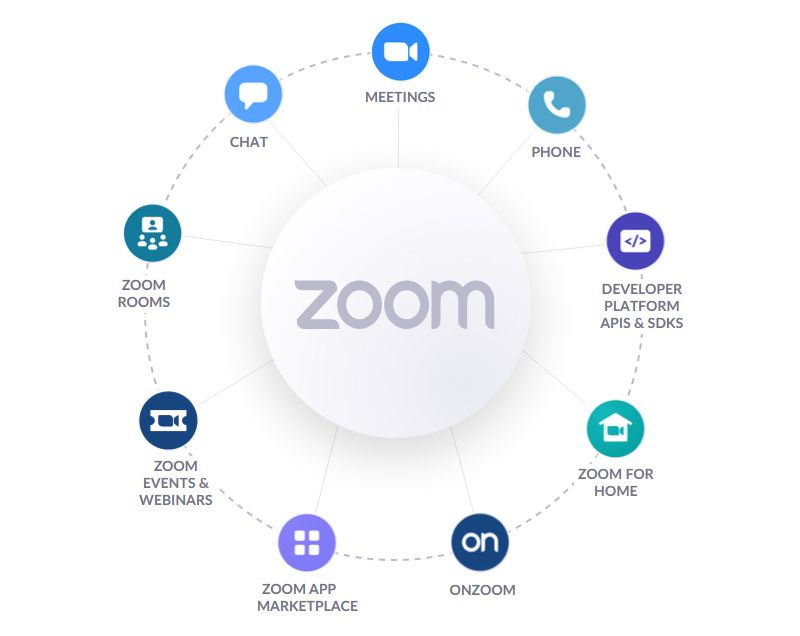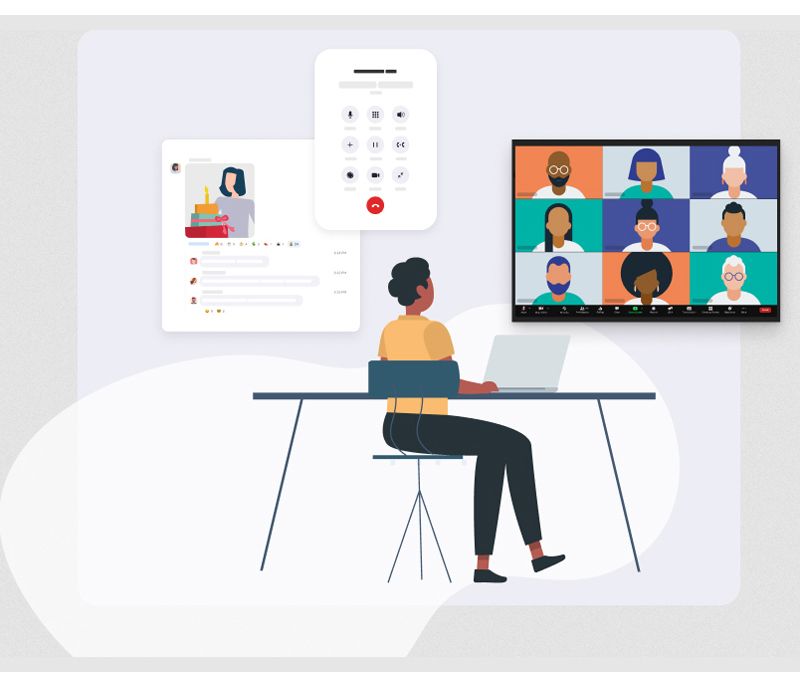According to a LocalCircles study, Zoom (27%) is the second most preferred video-conferencing app for group video calls in India
Does Zoom, the video-conferencing application, need any introduction? In covid days, Zoom, the ubiquitous app has found usage at school, business, and even among policymakers.
According to a LocalCircles study, Zoom (27%) is the second most preferred video-conferencing app for group video calls in India. WhatsApp made the honors while Microsoft Teams got 11 percent of votes.
Sify.com got a Zoom-in on Zoom’s growth numbers and business plans in an interaction with its India Chief Sameer Raje. Raje is the General Manager and Head for Zoom in India.

Edited Excerpts:
How is the user-growth in India?
Sameer Raje: I can tell you that we have managed holding onto user-growth for now. The numbers are more or less in sync with what we observed in Q4 (Dec-Jan-2020) and Q1 (Jan-March). Obviously the Q1 numbers were extremely big. It is still too early to comment on the numbers, given the growth in new opportunities and business coming.
Was it just schools or any specific category that resulted in growth?
Sameer: The spike in users is coming majorly from two fronts. The acceptance from SMBs (small & medium businesses) and traditional businesses. There was zero demand from this category previously. Also, the need for digital transformation has accelerated and pushed adoption for Zoom across all user-categories.
Why is it that even traditional industries and factories in tier-2 or tier-3 towns are using Zoom?
Rather than location, I would connect it to collaboration and identification of productivity goals. With Covid, we have a new normal that nudged users to adopt to newer technologies and collaboration tools.
Schools, for example, have moved online. In fact, online training has found a new business model. The change has propelled even traditional organizations towards online and they are seeing the benefits.
Prior to Covid, users had to go through a steep learning curve to transform themselves or even to remain productive. Now, even traditional organizations perceive digital platforms as a measure of success. They can visualize the skin in the game.
Have you managed to change or alter the India narrative on Zoom? How does India’s data governance policies affect Zoom?
We were unfortunate to get caught in the whirlwind of security. We are a huge country with a massive population and negative sentiments spread like wildfire on WhatsApp University.
Having said that, we have been communicating on the security-facts with general masses and stakeholders. Acceptance levels are improving.
The negative stance among government, states, and schools is changing and they are embracing Zoom. In fact, you would find social networking sites flush with messages from top industrialists and headhonchos. Their positive talk about Zoom is an endorsement for us.
The big news about Zoom is the Bengaluru centre. How many employees would be hired and what activities are being planned for this tech-centre?
The Bengaluru tech-centre announcement is a more recent one and directions for expansion or hirings should come from our technology heads & leaders in HQ. It’s going to be massive and a significant number. We are planning to house multiple streams of business including our engineering and research & development teams. We have hired recruiters and our initial teams.
Can you shed some light on the India story in Zoom’s revenues?
India is an important and critical geography for Zoom in terms of user-base, second only to the US. Our India operations were launched last September and due to the Covid situation, we are yet to bifurcate country-wise revenue numbers. However, I can convincingly say that we have a long way to go in our India story.

How is the uptake among enterprises when it comes to paying for services such as rooms?
Zoom’s model is based on license and subscriptions. There are free packages allowing users to interact upto a limit.
With enterprise models, there is huge cost-saving. Imagine, a single package helps meeting clients, customers, partners, and several teams. Compared to the cost of a flight to Bengaluru from Mumbai, the cost of a Zoom call is negligible.
Zoom also offers Enterprise wide deployments which tends to go into thousands of meeting minutes, generally 10,000 – 20,000. The deployment is huge and we have good testimonies. Iffco is one such client that uses Zoom for their communication needs.
How are you planning to compete against Jio?
We were established in 2011 and continue to be number 1. The market has grown and we have managed to grab attention. We have managed to be ahead of competition thanks to being close to the customer.
What somebody else does, is not what we want to focus on. In fact, having more competition is good for us.
Could you elaborate on the strengths?

Our strength is collaboration. We will continue to expand on that and innovate in conferencing. Talking of which, our APIs and SDKs are openly available.
From a customer perspective, we have had many case-studies of clients bringing Zoom into their own software. We are also in-touch with the banking industry, several schools and education institutions, different software tools and CRM services. We are also in touch with a lot of Indian developers to make Zoom more mainstream.

Is there something for sectors like MICE or NGOs and schools that Zoom offers?
We do work with NGOs and several industry bodies. In fact, hundred-thousand schools across the world use Zoom for no cost. In India too, we have at least 3,000 schools using Zoom to conduct classes. We also offer our interface to Central and state governments. A simple note should help us start such services for such organizations.
Disclaimer: This article was first published on September 21, 2020.
In case you missed:
- None Found










